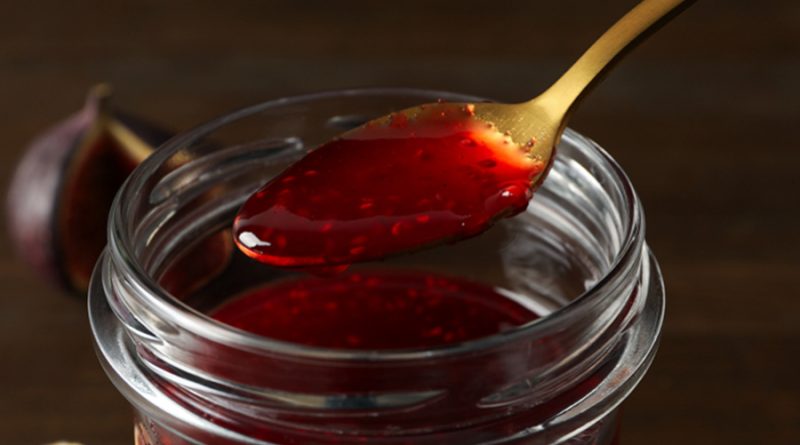What 5–30g of Hallucinogenic Honey Can Do to Your Body
Hallucinogenic honey, often referred to as mad honey, is derived from the nectar of rhododendron flowers, which naturally contain grayanotoxins—a group of neurotoxic compounds. This type of honey has been used in traditional medicine and rituals in certain mountainous regions. While it may appear as just another variant of natural honey, even a small amount can produce significant effects on the body and mind. Consuming a mad honey dose ranging from 5 to 30 grams can lead to a wide spectrum of experiences, from therapeutic to potentially harmful.
Neurological Changes Set In Quickly
When consumed in doses as low as 5 grams, mad honey begins to affect the nervous system. Grayanotoxins bind to sodium channels in nerve cells, keeping them in a continuously active state. This overstimulation leads to symptoms like tingling, numbness, or dizziness within 20 to 40 minutes of ingestion. As the dose increases toward the upper range of 30 grams, neurological responses intensify, which may include confusion, slowed speech, or visual disturbances. These reactions are direct indicators of the honey’s psychoactive properties and should be taken seriously.
Hallucinogenic Effects May Appear
The compound’s most notable characteristic is its ability to induce hallucinogenic experiences. At moderate doses, users report visual distortions, heightened sensory awareness, and altered perception of time. In doses exceeding 10 grams, the experience may deepen into more intense hallucinations and dream-like states. These effects, while sought by some for cultural or spiritual reasons, are a result of neurotoxic interference in brain signalling. For some users, the hallucinogenic properties can be overwhelming or frightening, especially without supervision or understanding of the honey’s potency.
Cardiovascular Disruption Is a Real Risk
One of the most documented effects of hallucinogenic honey is its impact on the cardiovascular system. Grayanotoxins disrupt the rhythm of the heart, potentially causing bradycardia (slowed heart rate) and hypotension (low blood pressure). Even at 5 grams, susceptible individuals may experience dizziness or fainting. At higher doses, particularly nearing 30 grams, more severe outcomes such as arrhythmias, chest pain, or collapse can occur. While many symptoms subside with rest and hydration, medical attention is required if signs of cardiovascular distress persist.
Digestive Reactions Are Common
Mad honey’s impact on the gastrointestinal tract is also significant. Nausea, vomiting, and abdominal cramping are frequently reported. These symptoms tend to appear early, often within the first hour of ingestion. While unpleasant, they serve as a natural limit for some users who find the physical side effects difficult to endure. The body’s response may help prevent further absorption of the toxin, but repeated exposure or high doses may result in more severe discomfort or dehydration.
Mood and Behavioural Shifts Vary
Apart from physical effects, mad honey influences mood and mental state. Lower doses may bring about a sense of calm or light euphoria. Some users describe enhanced introspection or emotional clarity. However, these effects are highly unpredictable and vary with individual tolerance, setting, and dosage. At higher amounts, the experience may tip into disorientation, anxiety, or paranoia. Understanding the psychological variability is essential when exploring the effects of this substance.
Legal Status Depends on Location
Those curious about its use often ask, Is mad honey legal? The answer varies widely. In some countries, mad honey is sold as a traditional product with cultural significance. In others, it is restricted or monitored due to its toxicity. Singapore, in particular, applies strict regulations on products containing neurotoxic or unverified medicinal compounds. This raises important considerations about import, sale, and personal use. Legal status should always be checked before possession or consumption.
Learn More: Mad Honey Dosage 101: How to Enjoy the Buzz Without the Burn
Doses above 30g can be dangerous
While a 5–30g mad honey dose can cause various physical and sensory responses, exceeding this range significantly raises health risks. High doses can lead to loss of consciousness, seizures, or cardiovascular collapse. These outcomes require emergency intervention and may result in hospitalisation. It is crucial to remember that mad honey is not a recreational product to be taken lightly. Dosage awareness, health status, and environment all influence safety and experience.
Traditional Use Doesn’t Mean Risk-Free
In cultures where mad honey is harvested and used medicinally, consumption tends to follow strict traditional practices. These often involve minimal doses and are guided by experience. When removed from these settings and used recreationally or out of curiosity, the risks increase. Hallucinogenic honey is powerful, but without knowledge and respect for its effects, users can find themselves in unsafe situations.
Hallucinogenic honey may appear harmless at first glance, but even a moderate dose delivers potent physiological and neurological effects. Whether used for cultural, therapeutic, or exploratory reasons, understanding its risks is essential before consuming. Its impact depends heavily on dosage, individual sensitivity, and context.
For more information about hallucinogenic honey and safe usage practices, contact Maddest Mad Honey today.




